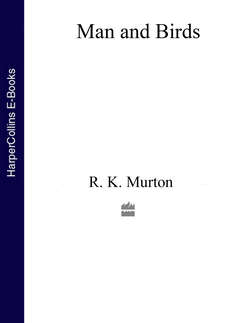Читать книгу Collins New Naturalist Library - R. Murton K. - Страница 9
ОглавлениеCHAPTER 4
BIRDS AND FORESTS
TO see oak woodland today in anything like its natural state, with a field layer of bluebells, bracken and brambles, and a shrub zone of holly and other small deciduous trees, one must seek out places like the New Forest or the Forest of Dean, or search for other isolated remnants, mostly derived from secondary plantings, which are scattered in small patches throughout the land. Oak in something like this condition had covered much of Britain for around 4,000 years, to be almost totally destroyed since the enclosures of the last 300 years. At sites in Breckland, pollen analysis reveals a decrease of tree pollen in about 3,000 BC followed by the appearance of grass ling and heather and there seems no doubt that Neolithic man was able to clear some quite extensive areas, to produce the heathland that exists today; that this has been maintained does of course owe much to sheep and rabbit grazing. These early efforts at forest clearance, though effective, were certainly made on a very local basis. The open nature of oak woodland allows the development of a rich associated flora of shrubs and herbs supporting a consequently diversified fauna; this diversity has also been facilitated by a long period of establishment enabling a wide variety of plants and animals to reach Britain from Europe. In contrast, beech woodland only spread to Britain at the end of the Atlantic climatic period, roughly at the time when the English Channel was formed and the land bridge with Europe was severed. With the beech came the sweet chestnut, hornbeam and various poplars, and a few other species. None of these have become so widely established as the oak, partly because they are more demanding in their physiological and ecological requirements. In times of much more severe preboreal climate birch was the dominant vegetation, and large areas reminiscent of these ancient times still survive in many parts, particularly in the north of Scotland. Native Scots pine, which preceded the southern deciduous forests, is now confined to the ‘black woods’ of the Highlands. This, like birch, provides a more uniform habitat than oak and supports a less rich, but none the less interesting, avifauna.
After systematically spoiling almost all the native woodland, man has replanted the landscape with comparatively few small stands of hardwoods, a fairly considerable acreage of trees in orchard and hedgerow, and an increasing area of exotic conifers, from the Japanese larch to the north American Sitka spruce and Douglas fir. These new woods have been colonised in varying degrees by our native sylvan birds. Deafforestation, reafforestation (often with new and exotic species) and afforestation (the planting of trees where none previously grew, at least in recent times) have certainly altered the bird fauna, as we shall see in the next chapter. Here our task is to discover whether the birds have any clear effect on man’s interests. The more general question of the role played by birds in the ecosystem is much more difficult to answer, because the interactions involved are complex and not readily measured. There have been many general statements made about the whole plant and animal community, which can be neither refuted nor proved. For example, it is often claimed that some birds, by eating forest seeds, may hinder natural regeneration and, conversely, that birds actually help to distribute seeds and fruit. While it is undoubtedly true that many plants have evolved dispersal mechanisms which rely on animals (the mistletoe is a good example), no quantitative data on such inter-relationships are available. Turček considers that jays, which are specialist feeders on acorns, are practically the only agents able to move acorns uphill. Mellanby (1968) has also considered the role of animals in this respect and disagrees with the many ecologists who consider that most animals prevent natural regeneration of oak woodland. Those animals which destroy the most acorns by feeding on them also appear to be of most importance in causing oak regeneration. Turček also has data to show the importance of birds, particularly jays and blackbirds, in disseminating the sweet cherry in some spruce forests in the central Slovakian mountains. During the summer a mean of 18 casted seeds and 7 seedlings were found per square metre, most within 50 metres of the fruiting tree. Similarly, nutcrackers transport the seeds of Pinus cembra
